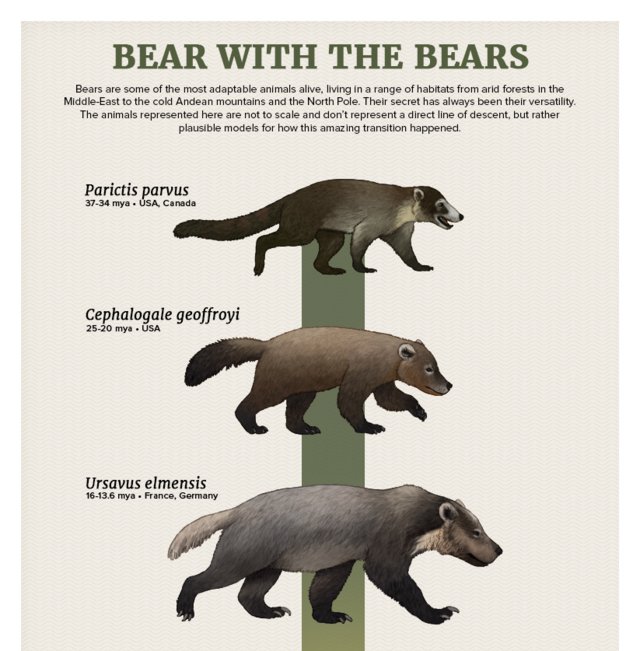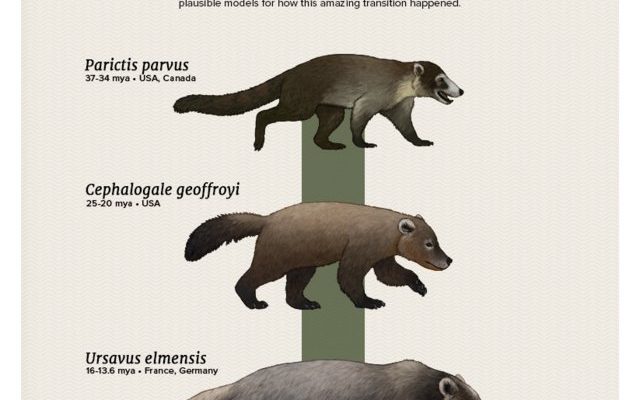
Imagine if you could trace your family tree back thousands of years. You’d discover all sorts of relatives you never knew existed! That’s kind of what we’re going to do with the black bear. By exploring their evolutionary history, we can learn about their ancestors, how they adapted to changing environments, and what makes them so unique in the bear family. So, let’s dive into this tale of furry evolution and uncover the story of the black bear.
Origins of Bears: A Family Affair
To understand the black bear’s evolution, we need to start at the very beginning—the origins of bears themselves. Bears belong to the family Ursidae, which branched off from other carnivorous mammals about 38 million years ago. Imagine a time when ancient forests were filled with bizarre creatures; the earliest bears were quite different from the ones we see today.
The first bear-like creatures emerged in Eurasia, and through time, they diversified into various species. It’s like watching your family tree expand, with cousins and aunts appearing as the years go by. About 5-10 million years ago, the Ursus genus appeared, which includes today’s black bears. This genus started to adapt to various environments, allowing them to thrive across continents.
Black Bear Evolution: An Oak Tree of Branches
Let’s zoom in on the black bear itself. The American black bear specifically, known scientifically as *Ursus americanus*, began to take shape around 1-1.5 million years ago. What’s fascinating is the adaptability of the black bear. They’re not picky eaters; they thrive in various habitats, from forests to swamps. It’s like they’re the Swiss Army knife of bears—versatile and resourceful.
You might be wondering why black bears can vary so much in size and color. It all comes down to adaptation! Depending on their environment, some black bears are jet black, while others can be brown, cinnamon, or even blond. This flexibility helped them survive in different regions as climates and landscapes changed. It’s nature’s way of saying, “If you want to stick around, adapt!”
The Ice Ages: A Time of Transformation
You may have heard about the Ice Ages, periods when massive glaciers covered significant parts of the Earth. The last Ice Age, which ended about 10,000 years ago, had a profound impact on the black bear. As the glaciers retreated, they opened up new habitats, allowing black bears to spread across North America.
During this time, some populations adapted to colder climates, developing thicker fur and gaining more fat to survive harsh winters. Here’s where it gets interesting: those that stayed in warmer areas maintained their versatile eating habits and smaller body sizes. It’s like some families prefer beach vacations while others head to the mountains for skiing!
Modern-Day Black Bears: Characteristics and Behavior
Now that we know how black bears evolved, let’s explore what makes them unique today. Modern black bears are known for their intelligence and curiosity. They can weigh between 100-600 pounds and stand on their hind legs to get a better view of their surroundings.
You might find it surprising, but black bears are excellent climbers! They often climb trees to escape danger or find food. Their flexible diet includes fruits, nuts, insects, and even garbage—if they can get to it. So, if you see a bear rummaging through a trash can, it’s not being naughty; it’s just being resourceful!
Black Bear Conservation: Building a Future
As we move forward, the story of the black bear isn’t just about evolution; it’s also about conservation. Over the years, black bear populations faced challenges due to habitat loss and hunting. Awareness of their ecological role has grown, and many conservation efforts are in place to protect them. It’s heartening to see communities rallying to ensure that these remarkable animals have a future.
Conservation programs focus on maintaining habitats, educating the public about black bear behavior, and implementing smart policies to minimize human-bear conflicts. After all, they were here long before us, and it’s our responsibility to help them thrive.
The Cultural Impact of Black Bears
Beyond science, black bears have a significant cultural presence. They appear in folklore, children’s books, and even cartoons! Think of Smokey Bear or Yogi Bear; these characters have given bears a friendly face while also educating us about the importance of nature conservation.
In many Native American cultures, black bears symbolize strength, courage, and resilience. They are often depicted as wise guides, showing humans how to live in harmony with nature. This cultural significance reminds us that black bears are more than just animals; they are part of our shared history and ecological story.
In wrapping up our journey through the evolutionary history of the black bear, it’s clear that these animals are not just simple creatures of the forest. They are a testament to resilience, adaptability, and the intricate web of life on Earth. From their ancient ancestors to the modern-day black bear, every twist in their story adds a layer of depth to our understanding of nature.
So the next time you hear a rustle in the woods or see a black bear on a wildlife show, remember their rich history. They’re not just bears; they’re survivors that have adapted through time, much like us. As we continue to learn and protect them, we honor their legacy and preserve the wild spaces they call home.

